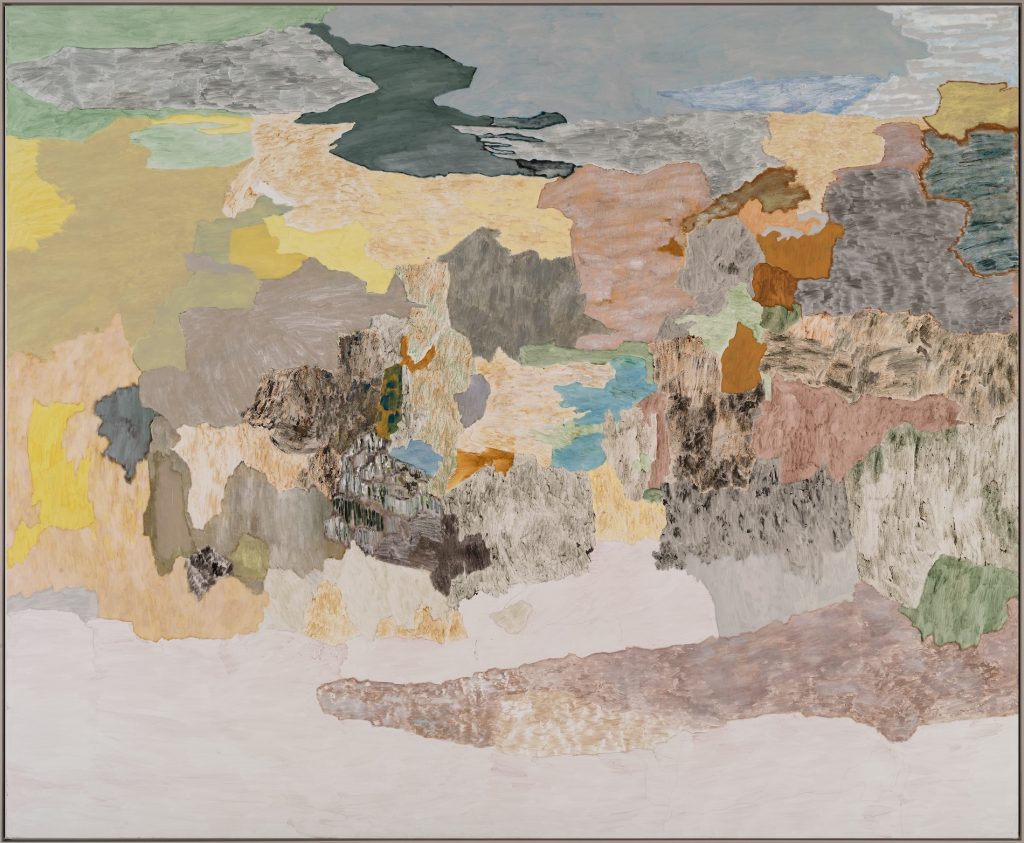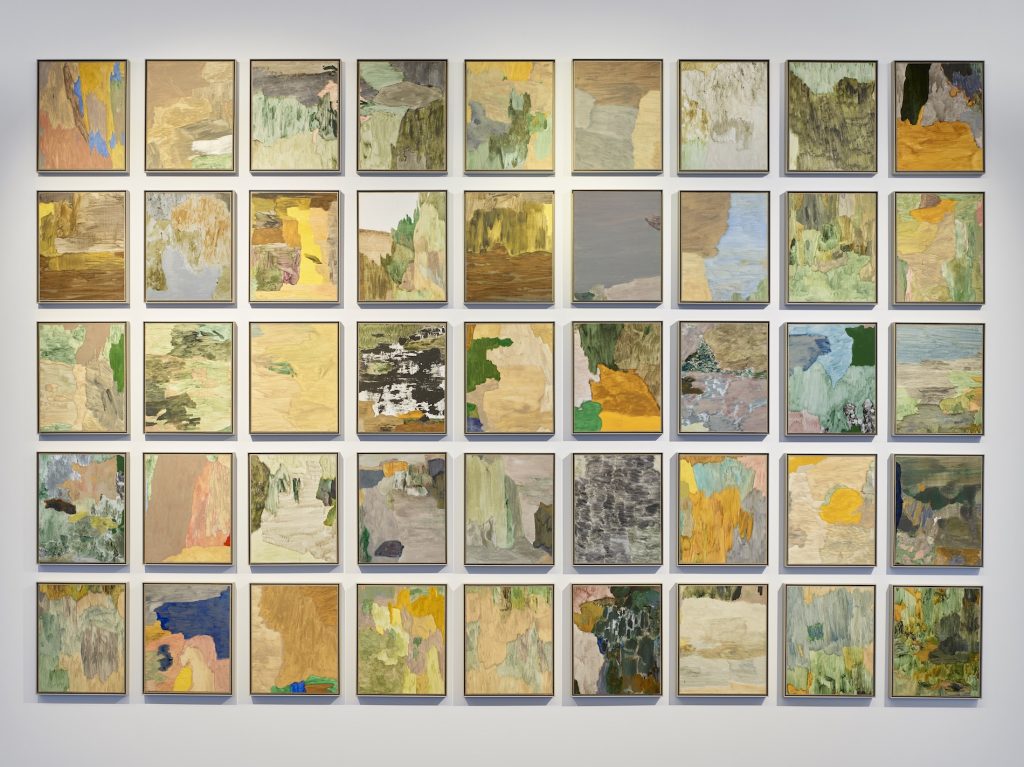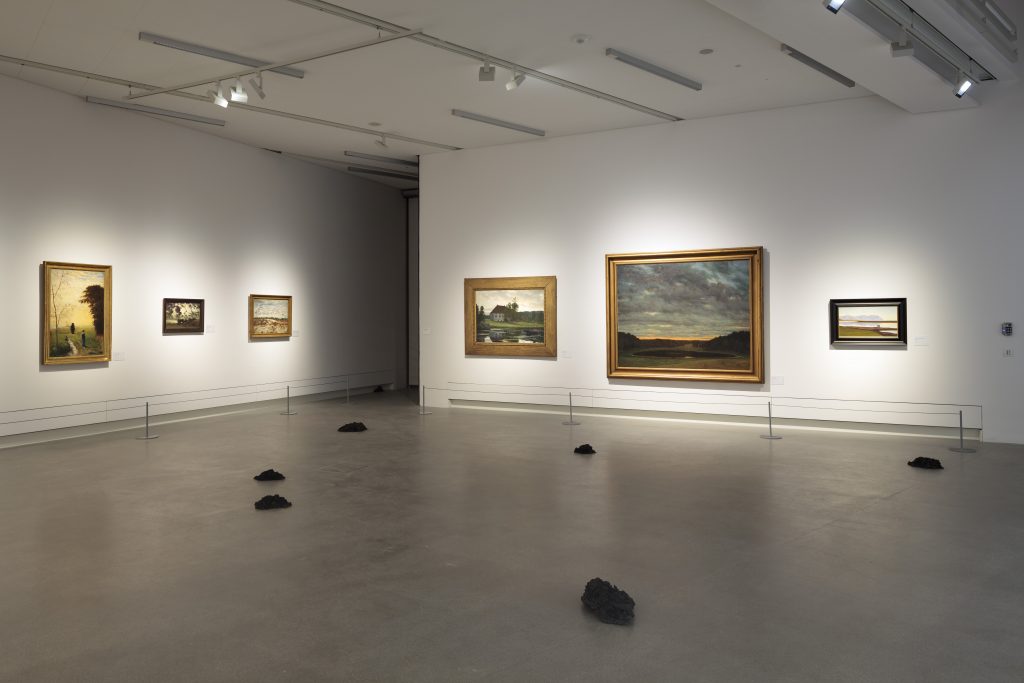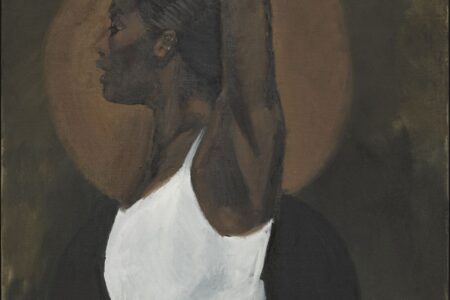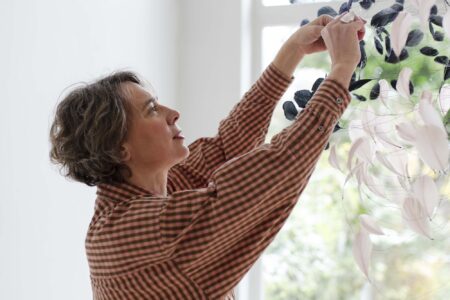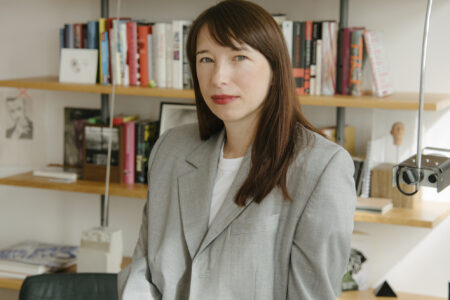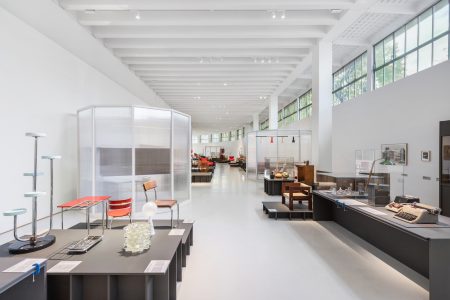Andreas Eriksson: The Painterly Artist
“Weaving is like making a painting before I start to paint, like a ghost that comes through from behind. The materiality, the optical illusion, the way structures develop to different optical vibrations. The border between a white canvas and the raw canvas.”
“Weaving is like making a painting before I start to paint, like a ghost that comes through from behind. The materiality, the optical illusion, the way structures develop to different optical vibrations. The border between a white canvas and the raw canvas.”
Since 2000, Swedish artist Andreas Eriksson has lived in Kinnekulle, in a house which is located in the middle of a forest near lake Vänern. He talks to TLmag about the human touch and the complementary process of creating his paintings and un-dyed hand-woven tapestries using the same linen canvas to intertwine processes of connecting his life to his memories, his inner landscapes to the seasonal changes. You can feel his true affection for iconic Swedish painters such as August Stringberg, Prins Eugen, Bruno Liljefors, Carl Larsson, Anders Zorn, and Hanna Pauli who rendered sublime, nature’s small wonders and the human being by observing every detail surrounding them with rawness, emotion, and drama.
TLmag: How much is your art and artistic process influenced by nature and the context of the Lake Vänern and Medelplana region where you live?
A.E.: So much. But it is an unconscious process, not a strategy. A walk in nature is never a strategy for me. I can see how the impressions are being used, how they show up in the work. It is not a scientific project, but something that comes through the back door. There is no ambition in it. Painting is something I “do”. I take decisions right then, in the moment of doing it. The more I try to construct or control things, the less interesting they get. I try to trust the process. When I paint in the Berlin studio, the work is more connected to the memory of where I live, which is something I am not feeling here in Lidköping. Recently, I have been painting in smaller spaces. It is very different, there is more concentration in it. At the moment, I find this interesting.
TLmag: Are you sensitive to the rhythm of seasons?
A.E.: Very much so. I can see it in the paintings. In the summer they tend to be greener, while in the winter they are more grey, black, and white. I prefer the colors of winter, autumn, and spring; the summer is terrible with all that green. As a human being, I am more depressed during the winter but with painting, at least when referring to the colors, it is the opposite. In past winters, I have not been able to paint very much at all. Autumn and spring are definitely the best seasons for me.
TLmag: What are some of your other sources of inspiration?
A.E.: Swedish painting from 1910 to 1940 is a huge inspiration to me. Something was happening to paint in Sweden between 1910 and 1915 –– it became very raw, direct, naive. It touches me deeply. Also, these painters were my first discoveries as a child. During the Coronavirus pandemic, I have ordered many books about this era from antiquarian bookshops and I am enjoying reading more about it. The house where I live in Lidköping was the birthplace of a gallerist who worked with all these artists. It is wonderful to be able to hang my painting collection here, which somehow also belongs to him. I always dreamt of being an art dealer one day.
TLmag: What is your relationship to linen canvas, which appears as a red thread through all your creations?
A.E.: I use the material as an entry point to start the painting process. About 10 years ago, I started to collect mainly Belgian canvasses. The structure within this material makes the work different, and this is very important for my process. I like to apply the paint thinly onto the canvas with hard brushes and I do not use turpentine. In this way, the structure of the canvas comes through very strongly. From this process, it was not such a big step to start making canvas myself, and that how we started with the tapestries.
TLmag: How do you connect your paintings to the woven tapestries?
A.E.: There is a connection between the way I put the paint onto the canvas and the structure of the tapestries. Sometimes the paintings look woven because I often apply horizontal or vertical strokes, just like in the process of weaving; The materiality, the optical illusion, the way structures develop to different optical vibrations, the border between a white canvas and the raw canvas.The connection between the birds, molehills, and the tapestries is also very interesting. The molehills deal with contrasts of under and over, conscious and unconscious; the birds with inside and outside, with the failure of optical illusion. The shadow paintings are also close to the tapestries, with their dissolving pigments, the picture that comes from the material.
TLmag: Could you tell us more on the collaboration between your Berlin studio and Stockholm’s historic Handarbeitets Vänner textile school?
A.E.: We rented a loom at Handarbeitets Vänner and they made some work for the studio. One of the weavers for the Berlin studio was recommended by the school, and she still works with me.
Weaving is a huge craft tradition in Sweden and Norway and it has inspired me a lot. It was normal that houses had looms-particularly during my mother’s and my grandmother’s generation when most families kept one in the basement.
TLmag: By mapping memories and tracing time, which was a title of one of your exhibition’s, how do you envision the humanistic essence in your artistic process?
A.E.: I hope that my work has a so-called human touch. All good artworks have a human touch. If you really want to be political in your art you have to express it through human touch. You cannot tell people what to do or how to behave, but you can give them the feeling of conscience. I do not believe in much of the political art that is practiced today. For me, for example, Giorgio Morandi brings across humanity much more strongly and the understanding of being a person living in this world.
TLmag: Do you practice full conscience meditation?
A.E.: No. I wish I could. While I paint, I get into a flow. When I get into it I do not know what happened, similarly to taking a walk in the woods, or driving a car.
TLmag: You often work in large scale. In the context of our current confinement, what is the impact on your artistic production, especially the textile art?
A.E.: I have had to deal with some practical issues. I work from home at the moment. The less space I have to paint in and on, the more time I give to painting. The weavers are also working from home and are making smaller tapestries for practical reasons.
TLmag: What’s next for you? Apart from your current life, do you have some personal expectations and dream?
A.E.: My goal is to get more and deeper concentration within the work. Also, I would like to make my life a little bit smaller, have less things hanging in the air. Perhaps this means only working on one picture. There may be only one picture left soon. As I started to accept 10 years ago that I am a painter, now I may have to accept that there is only one painting. A certain space. A certain rhythm.
https://www.neugerriemschneider.com/
https://www.stephenfriedman.com/artists/34-andreas-eriksson/


